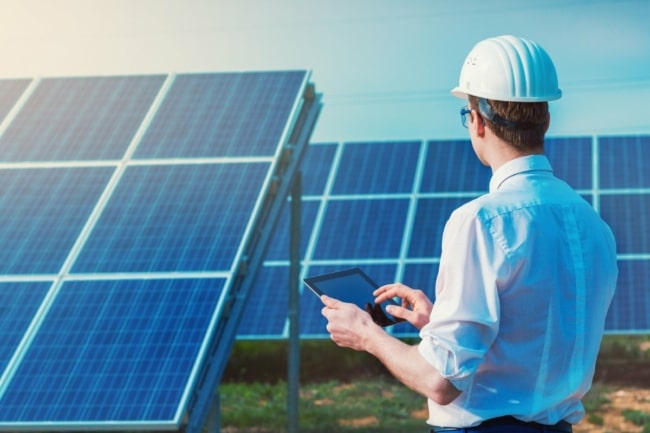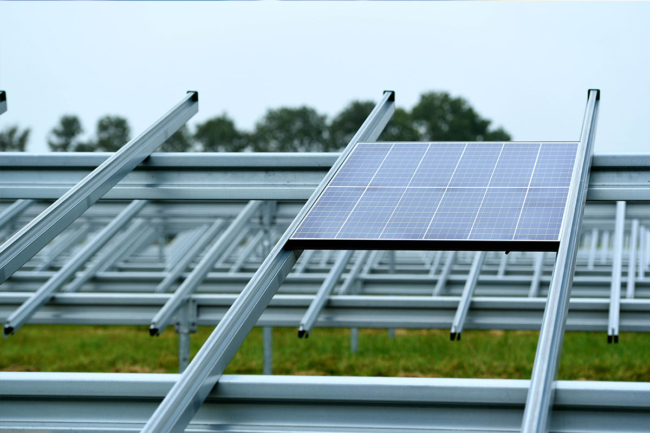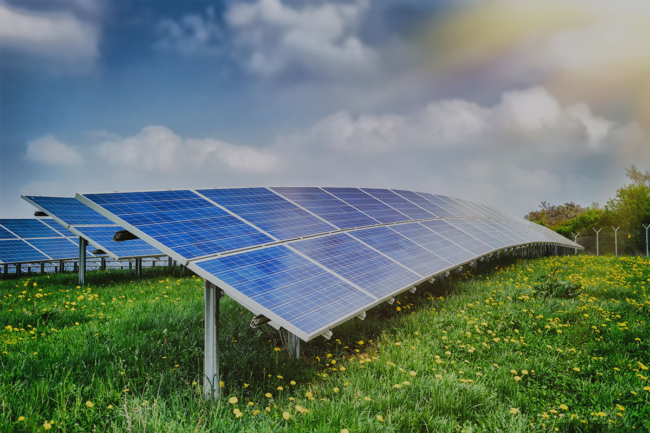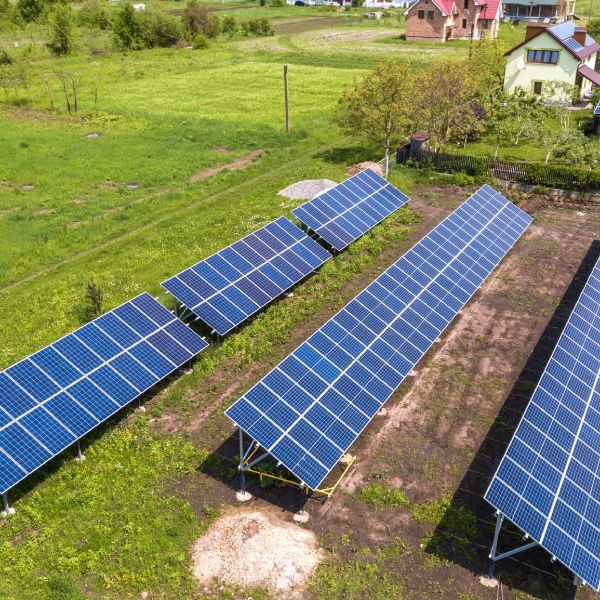
Can Solar Panels be Mounted on the Ground?
Yes, ground mounted solar panels (or PV panels) are a great choice for commercial projects or large solar farms looking to generate renewable energy at high volume. Our guide to ground installed solar panels covers all you need to know about getting started.
Do You Need Planning Permission for Ground Mounted Solar Panels?
Commercial projects and large solar farms will most likely need to apply for planning permission, which is required if solar installations are:
- More than 4m high
- Less than 5m from the boundary of a property
- The solar farm covers an area of more than 9m²
- The solar farm faces a motorway
- The solar farm is located in a conservation area or nature reserve
- If 1 or more solar farms currently exist on the property
How are Solar Panels Ground Mounted?
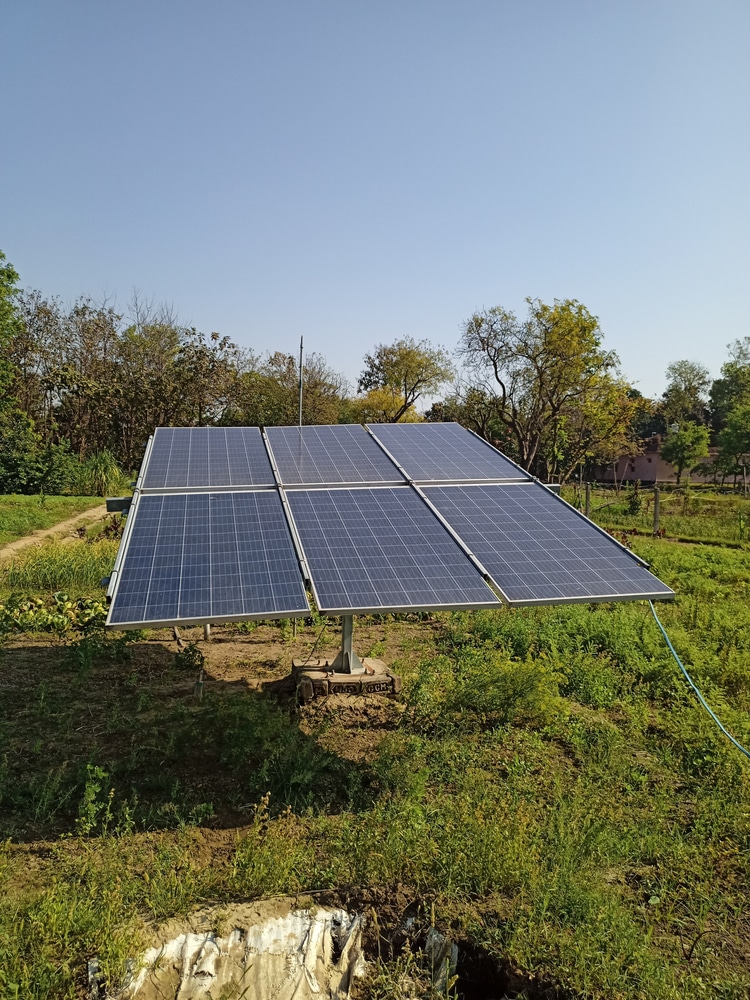
Greater Flexibility
There is more flexibility in the layout and installation of ground mounted PV panels than in roof installations, with more freedom in how the panels can be orientated, angled and arranged.
When mounting ground mounted solar panels, the panels can be arranged in a number of formations – single height, stacked, and positioned either portrait or landscape to maximise on space. However, it is recommended that solar panels in the UK are south-facing, so that they capture maximum sunlight.
The panels should be angled so that rain and snow cannot collect on them, and so that the wind does not damage them. There are two main ways to complete solar ground mounting: with a ballast or a metal frame and pile.
Metal Frame
When using a metal frame and pile, the solar panel is fixed into the ground, using a solar panel ground mount; the panel itself is attached to a metal frame and pile, which is screwed into the ground. This method is used when you want to maximise on ground space – for instance, if you want to grow plants or crops under the panels, mitigating concerns regarding loss of farming land and damage to the ecosystem and wildlife. Piling can also be used where there is deep bedrock.
Ballast Boxes/Blocks
Whereas piling secures the panel frame into the ground, ballasts are an above ground solution. The solar panel is fixed to a concrete block, known as a ballast block, which sits on the ground to secure the panel in place. Ballast blocks are used where the soil is too soft or otherwise unsuitable to drill into for piling.
Benefits of Ground Mounted Solar Panels
Installing PV ground mount systems may seem like an obvious option for large and commercial solar projects due to the scale of their installations. However, if you’re still considering whether ground installations are the right way to go, here are a few benefits.
More Space
Installing solar panels on land allows you more space to install a higher number of panels. A greater panel area will increase the amount of sunlight absorbed and ultimately the amount of energy generated – which can then be used directly or sold..
Ease of Access
Ground installations are far more accessible than roof installations, which is important for ongoing cleaning and maintenance, repairs and replacements.
Roof Isn’t Always Viable
Ground installations are a great alternative where roofs are not viable for solar panel installation. Whether your building does not have the roof space, or is not able to support the fixings and components required, ground installations are a preferable option for many. On top of this, the angle or orientation of the roof may not be optimal for solar panels.
Ventilation
Increased ventilation around the sides of the solar panel increases the efficiency of the panel; ground mounted panels have more ventilation than roof-mounted panels.
Easier to Expand
It is easier to expand the scale of the solar project with ground-mounted panels, due to being able to use more of the land if and when it is required.
Considerations of Ground Mounted Solar Panels
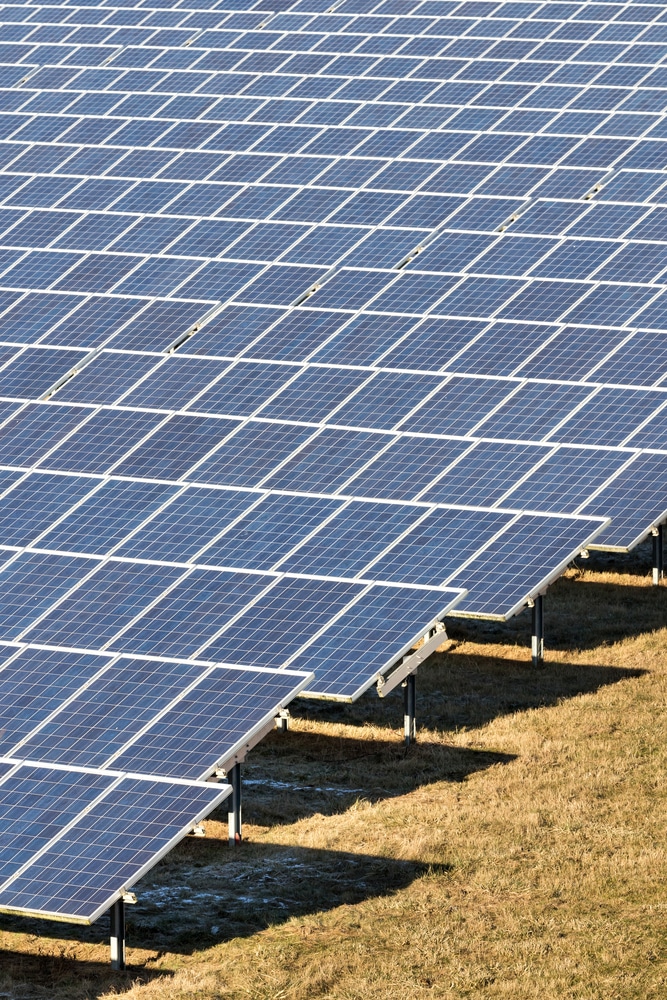
Takes Up Land
Ground-mounted solar panels require an expanse of land which could otherwise be used for agriculture and farming. This may also make acquiring planning permission difficult, especially if the land is currently used for, or is suitable for, agricultural purposes.
Restricted to Rural Areas
Not all land is suitable for a solar panel farm, and it can be furthermore difficult to secure land. Therefore, solar panel farms are usually located in rural areas where there is more available open space.
Logistical Issues
There may be logistical issues associated with accessing rural areas, especially for the installation of the solar panel system, which can prolong the process or incur additional costs.
Increased Labour, Materials & Potential Higher Initial Costs
Ground-mounted solar farms require high initial costs due to the associated planning, land acquisition, and scale of the project; alongside this, the maintenance of the farm over time will cost more due to the size of the project compared to roof-installations.
However, this must be weighed up against the greater amount of energy generated by the farm, which will offer return on investment.
Protecting Solar Panels from Wildlife
With ground-mounted solar panels in rural areas, it is inevitable that wildlife will interact with the farm – whether this is sheep, birds, foxes and more.
Whilst animals don’t pose a huge threat to ground solar panels, there is a chance they can damage the infrastructure; animals can chew through the wiring, scratch on panels and frames, and their waste can even cause corrosion.
For peace of mind, ensure your infrastructure is suitable to withstand rural conditions. Utilise sheep guards and cable management accessories to protect against damage to both the solar farm and animals.
Commercial Ground Mounted Solar Projects
For large scale and commercial projects, ground-mounted installations are the only way to go. The limitations of roof installations simply don’t make this option viable.
However, before approaching a ground-mounted large-scale project, detailed planning, including the acquisition of land and planning permission, will need to be considered to ensure it can be achieved on time and on budget.
